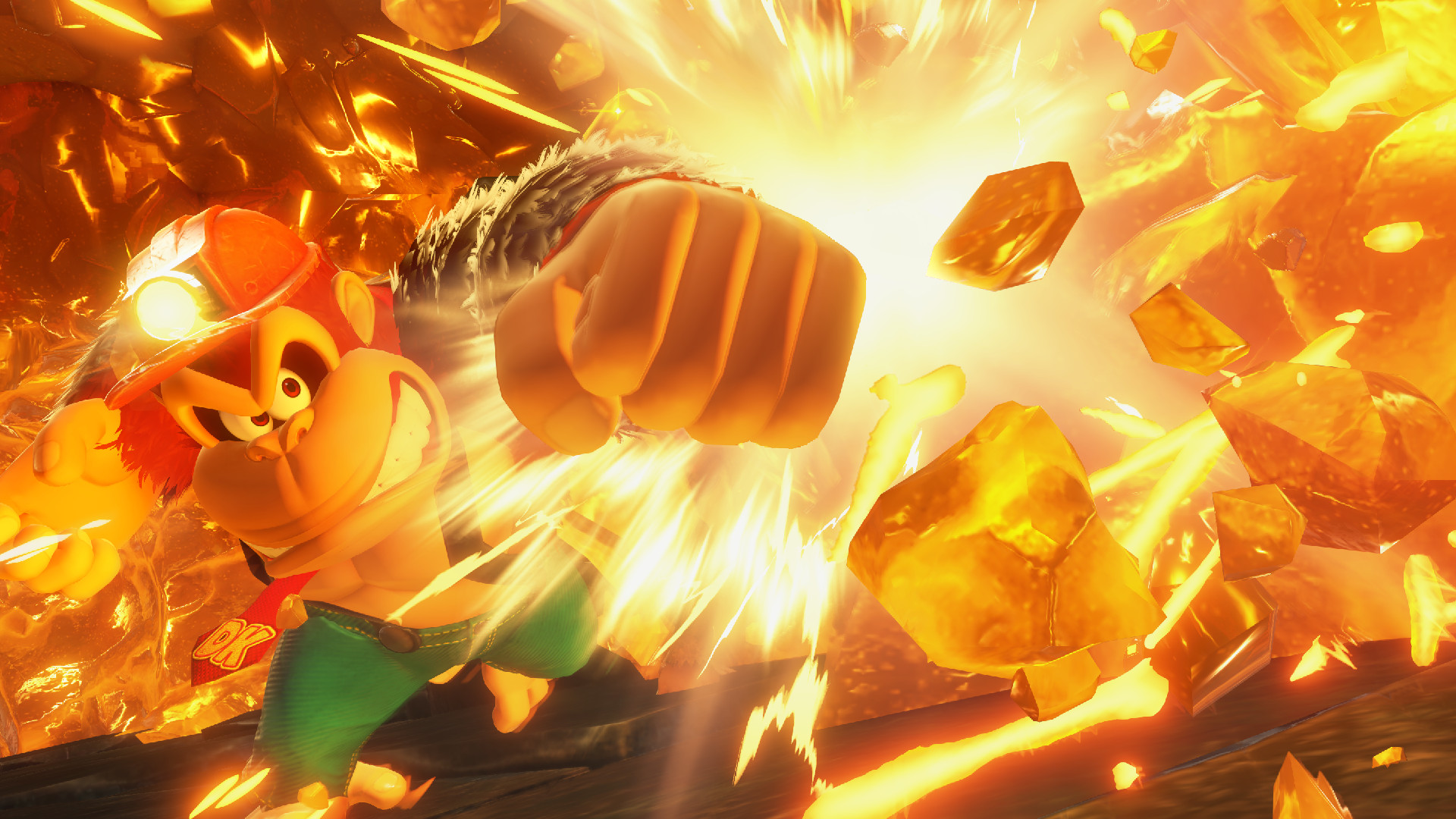
Donkey Kong Bananza director Kazuya Takahashi has acknowledged framerate drops in the game, saying that “we prioritized fun and playability.”
DK’s latest game is effectively the next 3D Mario – it’s made by the Super Mario Odyssey team after all – but where Mario’s main tricks have been the likes of anti-gravity or a cap that allows Mario to possess everything, the big gimmick for a big gorilla is channelling his inner Fred Durst and breaking stuff.
Destruction is at the core of Donkey Kong Bananza, with seemingly every bit of the environment ready to burst into voxels (tech that was actually developed first for Super Mario Odyssey), which naturally can result in dropped frames, as some Donkey Kong Bananza previews have noted.
When asked about framerate drops by Spanish outlet La Vanguardia (via VGC), Donkey Kong Bananza director Kazuya Takahashi said, “We’re aware that performance may drop slightly at these times. However, as you say, overall the game is smooth, and at points where large-scale changes occur, we prioritized fun and playability.” Takahashi explained that “we intentionally used effects like hit-stop and slow motion to emphasize impacts. Second, because we use voxel technology, there are times when there are major changes and destruction in the environment.”
Ultimately, I think this is the right move because the alternative is artificially limiting the destruction available to players, which would arguably go against the spirit of the game. Funnily enough, the closest example I can think of is Metal Gear Rising: Revengeance, in that game Raiden had access to a free-cutting mechanic; however, on Xbox 360, you were limited to how many pieces you could chop an enemy into, with it automatically giving up after a certain point before your Xbox exploded.
Over on PC, that lock was taken off and you could cut as much as you like, and personally, I loved going ham, seeing the framerate tank and hearing my PC sound like a jet, so I’m cool with sacrificing some frames to go bananas.
Donkey Kong Bananza started as a Switch 1 game, but bringing it to Switch 2 enabled “very large-scale” destruction Nintendo couldn’t pull off before.



